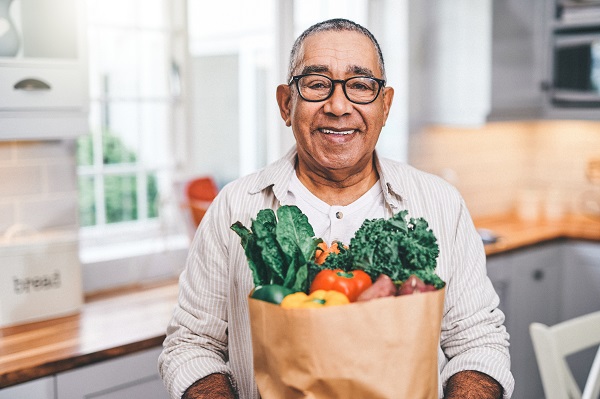Food and the Inflammation Process
by Michelle Howard, RN
February 23, 2022

Betty Lynn was diagnosed with arthritis ten years ago. She didn’t believe in diets, and ate pretty much whatever she felt like. Betty enjoyed cereal with sugar, the Sunday doughnut after church, Chinese food on Friday nights and even the occasional frozen pizza. Betty wasn’t overweight, and by first glance she appeared to be in good shape. Everyone complimented on her physical shape so she never took to heart what the doctor said. Betty never thought that her diet could be affecting her joints.
Everyone knows that eating healthy will help us live a long healthy life. However, did you know that certain foods can actually make inflammation increase or reduce? The body uses inflammation to protect itself and fight off invaders. This is helpful in many situations, but for someone that has arthritis their body is already in an inflamed state. Having the knowledge of what we are doing to our bodies with everyday foods could be what everyone needs to make better choices.
So, it is a Saturday afternoon and you are headed to a birthday party where there will be cupcakes. You’re already thinking about how these delicious confections have come from your favorite bakery. However, sugar is a wolf in sheep’s clothing. Did you know that sugar stimulates the pleasure center in our brain just like Cocaine and heroin? Scientist has found that sugar is as addicting and you will actually need to detox to break this addiction from sugar. Sugar also triggers the release of inflammatory messengers which could be contributing to pain.
Cutting down on your sugar intake is a difficult task, so start with a plan. When you start to get that urge for something sweet, reach for fruit, go on a walk, read a book, or call a friend. If that isn’t helping, purchase some dark chocolate and put it in the freezer for emergencies. 100% Cacao and dark chocolate slow the production of signaling molecules involved in inflammation. Use this sweet trick in moderation, i.e. don’t eat the whole bag in one sitting.
Saturated fats can also trigger inflammation. The worst food to eat that causes inflammation is pizza and cheese. Unfortunately, this is a favorite for many of us. Other culprits are red meat, full fat dairy products, pasta dishes and grain-based deserts (cakes, cookies, doughnuts, pies, cobblers, and granola bars).
In some individuals, grains are another cause of inflammation and cause a sugar spike that’s different from added sugar. If you’re sensitive to gluten, several food items can cause your tissues to flame up. For example, barley, rye (in food or alcohol form), pastas, breads, and crackers can all cause increased inflammation.
So say you have a craving for a hamburger and you decide to go out to eat. When ordering a hamburger you might want to reconsider the French fries. Breads, rolls, crackers, white rice, white potatoes, mashed potatoes, and many cereals are refined carbohydrates. These are high-glycemic foods that
contribute to obesity, health conditions and can stimulate inflammation. So, skip the fries and try a side salad.
Mono-sodium glutamate (MSG) is a chemical that can trigger chronic inflammation and affect liver health. MSG is a flavor-enhancing food additive that is most commonly found in prepared Asian food, soy sauce, some fast foods, prepared soups and soup mixes, salad dressings and deli meats.
Some people believe that by ordering a diet soda or picking out a lite yogurt, they are making healthy choices. However, choosing sugar-free when ordering a drink beverage or snack is not always the best choice. Aspartame is a non-nutritive, intense artificial sweetener found in thousands of products around the world. It is a neurotoxin that affects the brain. If you happen to be sensitive to aspartame your immune system will react by attacking the chemical, which in return triggers the inflammatory response.
To avoid additional inflammatory processes, include lots of vegetables, fruits, fish, and chicken on your grocery list. If you have a weakness for a sweet treat, try the brownie recipe below.
Healthy Brownies:
- 2 Bananas
- 1 Cup 100% Cacao Powder
- 2 eggs
- ¼ Cup Honey
- 2tsp Vanilla
- 2tbsp Coconut Milk
- ½ tsp Baking Soda
Mix everything except the baking soda in a food processer until smooth. Pulse in the baking soda. Grease a 9×9 baking dish and poor brownies in. Bake at 355 for 25-30 minutes. Berries can be added for an additional treat!
Michelle Howard, R.N. is a Care Manager at the Placerville Office of Elder Options. Michelle has a passion for helping older adults and is well versed in dementia care, client assessments, and community resources.

